These are said to be second generation Eneloops according to the discussion here. This is a placeholder until I get some initial measurements done and photographs taken.
More to follow in a few hours.
These are said to be second generation Eneloops according to the discussion here. This is a placeholder until I get some initial measurements done and photographs taken.
More to follow in a few hours.
They look close enough to the only second generation Eneloops to me.
The packaging. Not, IMO, as elegant as Sanyo’s packaging but much, much less pretentious than the packaging of the 2nd generation Tones I have.
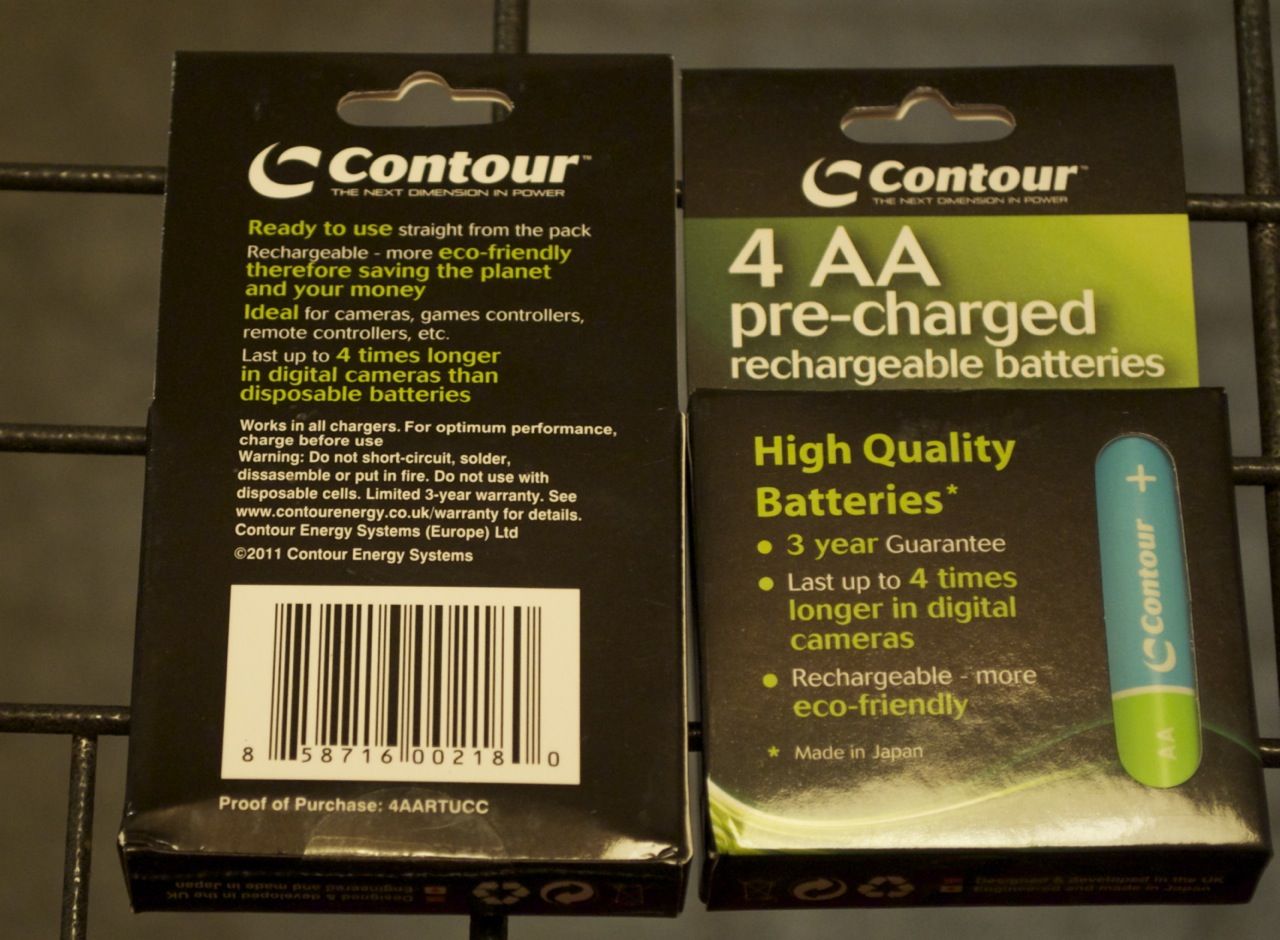
The bottom of the box.
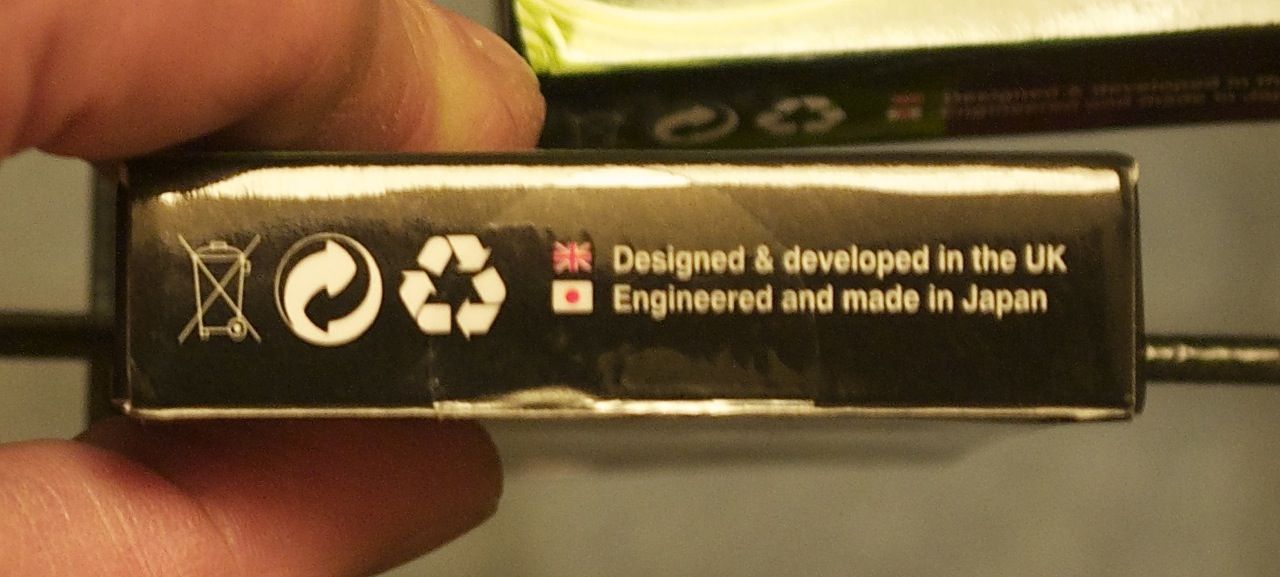
The writing on the cells
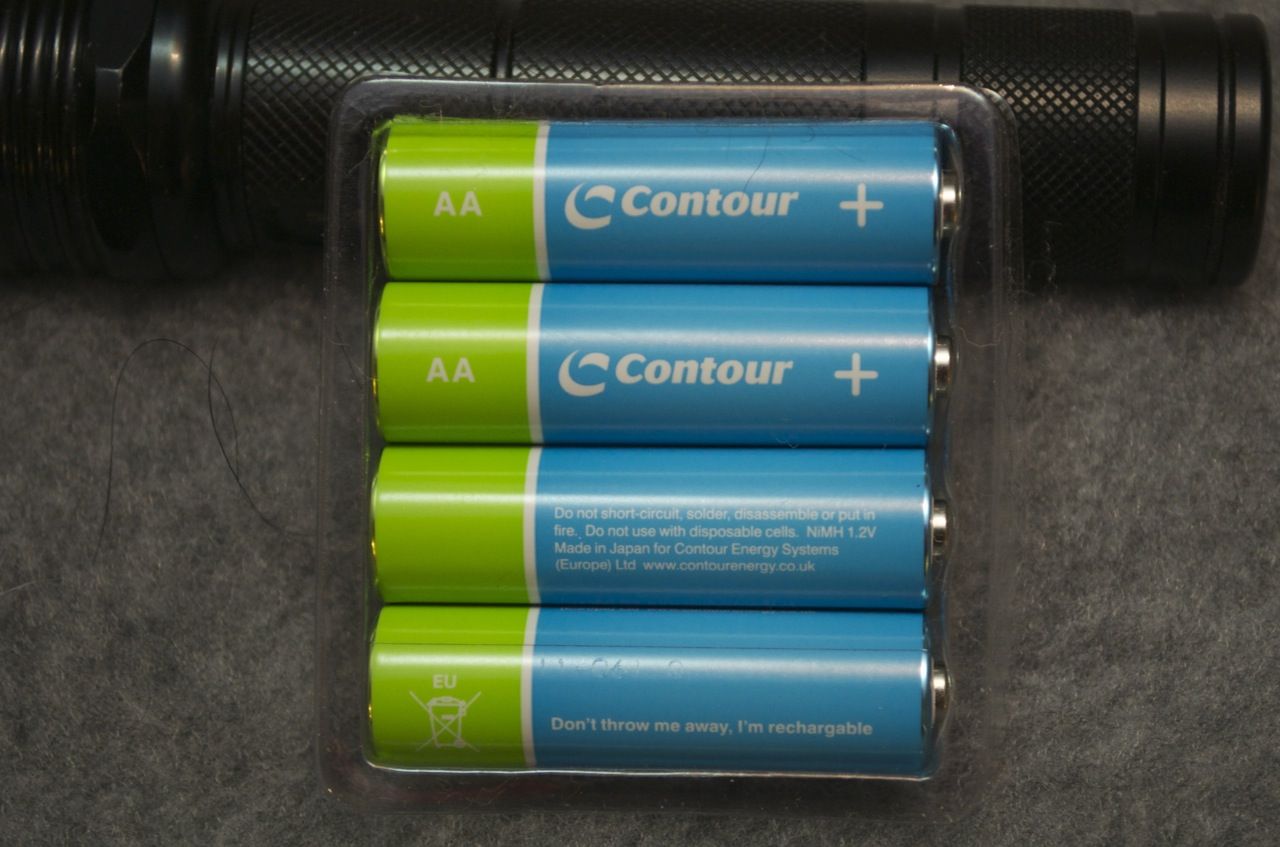
Positive end
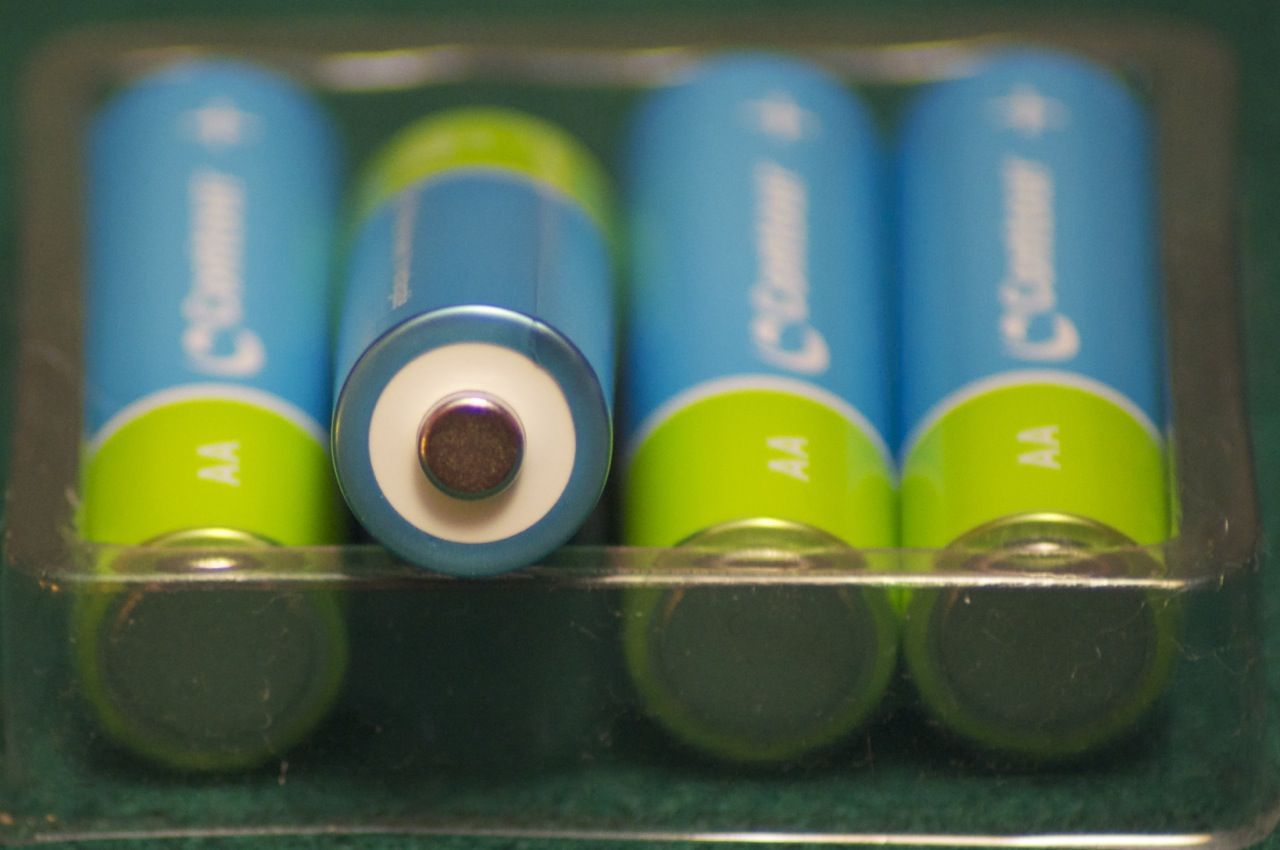
Over-lit shot of the button. I can’t find any vents on it even with a magnifying glass.
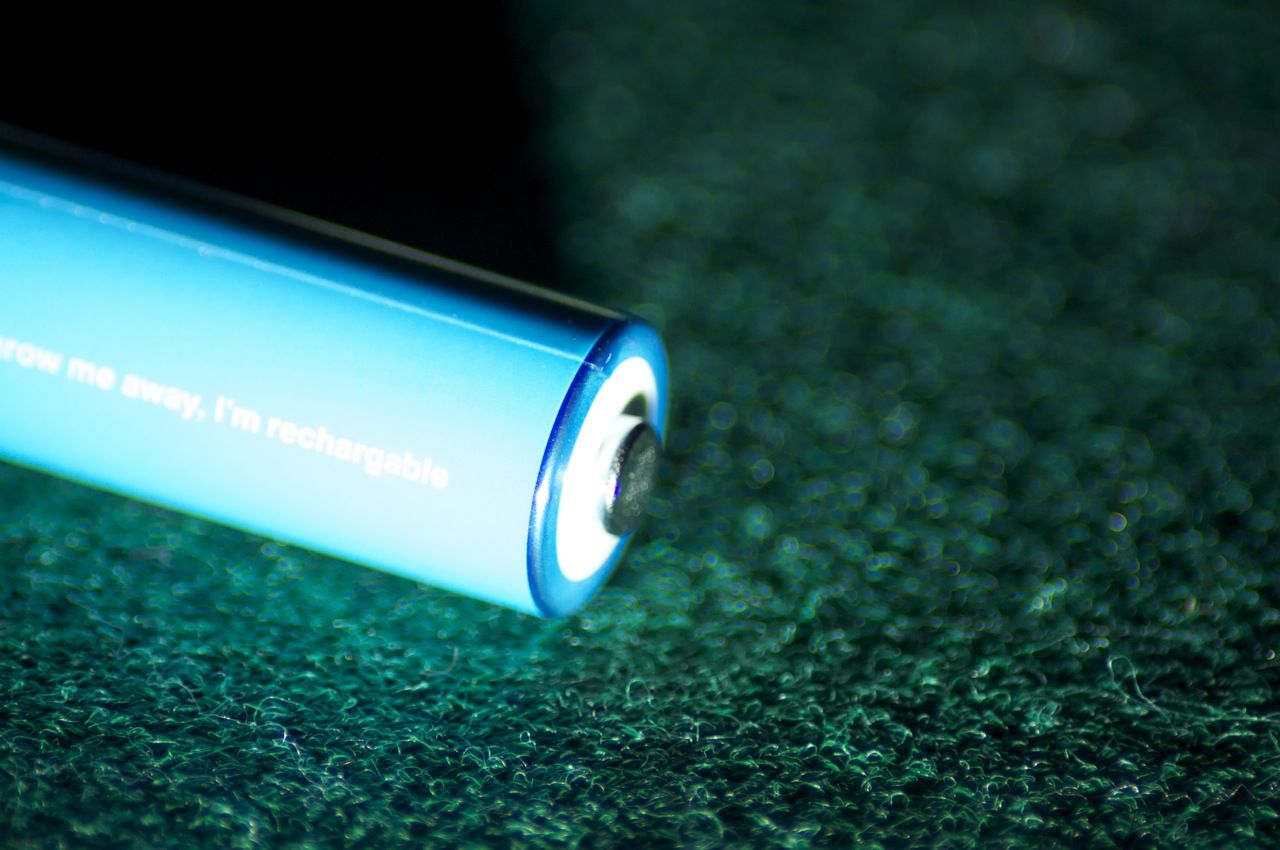
Positive ends of a Gen. 2 Tone, the Contour and a Gen. 1 Eneloop.
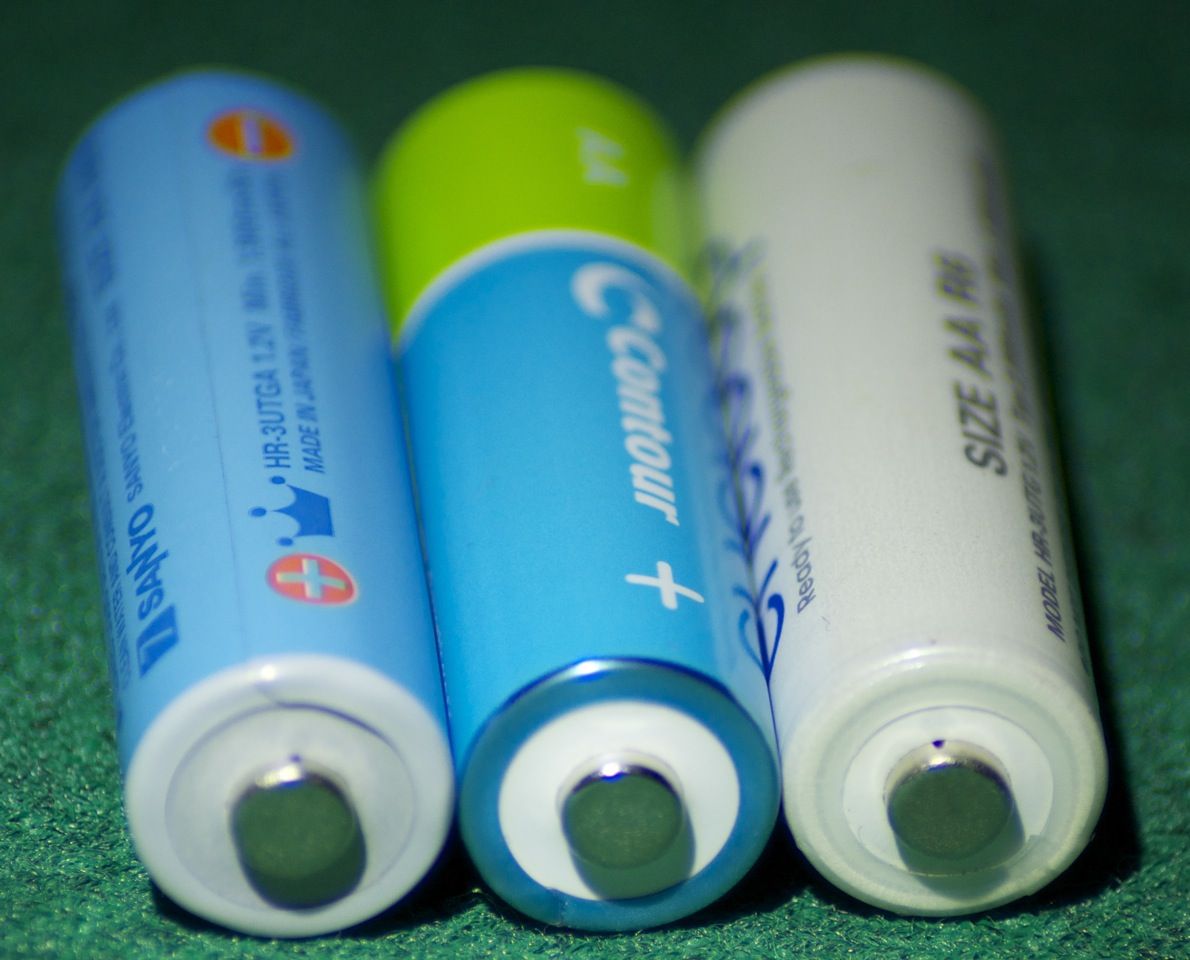
Button to button with a Gen. 2 Tone

The negative ends. Gen. 2 Tone, Contour, Gen. 1 Eneloop
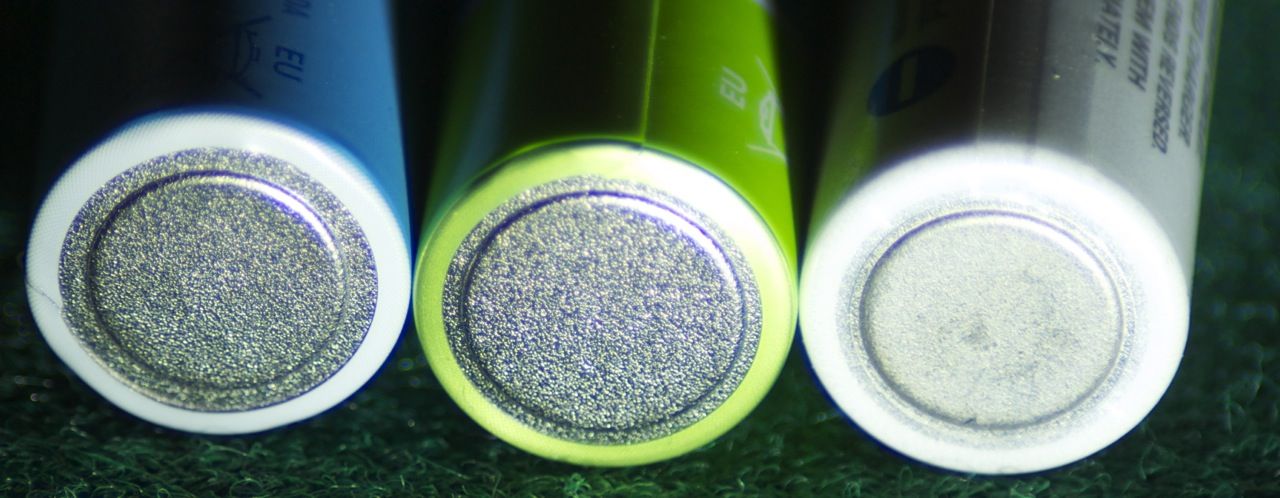
That should be enough pics to be going on with. If anyone wants more, or different pics, let me know.
Now to number them and measure voltages.
I weighed 4 of them and 4 Gen. 2 Tones. They all weighed between 25.8 and 26.0g with 3 Contours and 3 Tones weighing 26.0g and one of each weighing 25.8g. This was not on a lab balance but a cheap DX digital scale of unknown accuracy but hopefully good repeatability.
All sixteen were between 1.306 and 1.308volts fresh from the packet. I also dug out a pack of 8 second generation Tones which I’ll test alongside the Contour cells. They are completely unused other than charging in 2012. They are all at 1.309-1.31V. Now for the first set of discharges. Back tomorrow with some numbers.
is, I guess, mostly an idling current with short periods of higher current draw. Both the dims and the weight will give the “energy density.”
Eco friendly probably means less w and less w-h for a given weight and volume, unless they’ve had a breakthrough.
Yup - early digital cameras were notorious for their current draw - as in tens of amps for some of them. Current ones are far less brutal, but any flashgun will happily draw as many amps as it can - and then some. My Canon compact is awful with rechargeables - it’ll actually take a couple of hundred pics with the flash on full power, but if they’ve been in the camera for a week or so it’ll complain about their voltage even if no pics have been taken. Take a picture and it’ll be happy for a few hundred more despite moaning about low voltage. Must get round to trying it with a LiFePO4 cell and a dummy cell to see how well that works. I’d not feed it a couple of NiZn cells unless I found that someone else had had that work for them - don’t want to kill the thing,
Contour ?Gen 2 eneloops
Intial Intial
Voltage Discharge
Cell 1 1.306 1,529
Cell 2 1.306 1,538
Cell 3 1.306 1,529
Cell 4 1.307 1,498
Cell 5 1.307 1,472
Cell 6 1.307 1,486
Cell 7 1.307 1,477
Cell 8 1.307 1,459
Cell 9 1.307 1,520
Cell 10 1.308 1,529
Cell 11 1.308 1,524
Cell 12 1.306 1,502
Cell 13 1.307 1,479
Cell 14 1.307 1,489
Cell 15 1.307 1,484
Cell 16 1.307 1,455
Av. 1.307 1,498
Looking good so far! :bigsmile:
Marc.
Sorry if I sound ignorant mates, but could someone explain the numbers? ![]()
Or basically, are they repackaged Eneloops?
Yeah, at some point we just need to sum up all the numbers and data. This goes for all these testing threads with pages of data.
Yes and summarize the findings after extracting all the info possible, preferably with graphs & formulas & best fit curves. Along with this there should be a clear idea of the goals of the data collection.
Doing this will provide insights into how better to collect data. It’s a feedback loop - data collection > summaries > goals > data collection.
Spreadsheets have some data reduction tools and I have notes from a stats course that give practical methods for reducing all types of engineering data: Student’s T table, tolerance limits to some confidence level, hypothesis testing, ANOVA and whatnot. These very tedious stat calculations are no problem for spreadsheets.
Bell-shaped curves, anyone? ![]()
Thus far, fancy stats are unwarranted. The initial discharge is of limited usefulness as I do not know when they were manufactured or charged though they were certainly manufactured after mid-2010 if they (As seems extremely likely) are rebadged Eneloops. What we’re really looking for here is consistency and hopefully consistency with real Eneloops. The 2G eneloops I have were charged in late May 2012 and have been untouched since - they were manufactured in March 2010. What I want to see is capacity over time and consistency.
So from the initial results we see a very good consistency in voltage - not really a surprise as voltage is not a useful indicator of charge in NiMH cells. But someone might have a use for the data.
The consistency in charge available to 1.000V under load with a span of 73mAh between the most and least charge - or in real world terms a variation of about 5%. My measurement errors may be greater than this, though I hope not.
Well, if they are nearly 3 years old and have 75% of there capacity left then I am impressed. I would also say that is a tick in the eneloop box.
So far so good.
Thanks for doing this Don,
Marc.
And so testing aged batteries is pretty useful. The battery makers must respond to market forces and so maybe their production line is changed somewhat every six months, maybe less often.
All 16 came off the charger between 1.450 and 1.455V so good consistency there.
First full cycle on 8 of them underway - results in the morning.
And so testing aged batteries is pretty useful - batteries that wear out soon is a hidden cost of ownership.
The battery makers must respond to market forces and so maybe their battery chemistry is changed somewhat every ~6 months.
I'm not too happy with the numbers on Run 2 thus far - looks like my charging regime isn't cramming in every ounce of charge it could. Cells 9-16 discharging just now.
| Contour ?Gen 2 eneloops | |||||
| Intial | Intial | Intial | |||
| Voltage | Discharge | Charge | Run 1 | Run 2 | |
| Cell 1 | 1.306 | 1,529 | 2,086 | 2,008 | |
| Cell 2 | 1.306 | 1,538 | 2,094 | 2,019 | |
| Cell 3 | 1.306 | 1,529 | 2,096 | 2,016 | |
| Cell 4 | 1.307 | 1,498 | 2,070 | 1,986 | |
| Cell 5 | 1.307 | 1,472 | 2,032 | 2,078 | |
| Cell 6 | 1.307 | 1,486 | 2,043 | 2,091 | |
| Cell 7 | 1.307 | 1,477 | 2,056 | 2,078 | |
| Cell 8 | 1.307 | 1,459 | 2,006 | 1,900 | |
| Cell 9 | 1.307 | 1,520 | 2,183 | 2,200 | |
| Cell 10 | 1.308 | 1,529 | 2,244 | 2,253 | |
| Cell 11 | 1.308 | 1,524 | 2,235 | 2,205 | |
| Cell 12 | 1.306 | 1,502 | 2,232 | 2,187 | |
| Cell 13 | 1.307 | 1,479 | 2,154 | 2,128 | |
| Cell 14 | 1.307 | 1,489 | 2,149 | 2,117 | |
| Cell 15 | 1.307 | 1,484 | 2,109 | 2,117 | |
| Cell 16 | 1.307 | 1,455 | 2,189 | 2,029 | |
| Av. | 1.307 | 1,498 | 2,187 | 2,107 |
first step.
How many significant figures need to be posted for these values? IMHO the first column could be rounded to 1.31 unless this two mV difference means something.
By way of answering, how sensitive to room temperature are these voltages? What the accuracy and resolution and repeatability of your meter (you may be seeing variations in your meter)?
The trees and branches and leaves can hide the forest.
I’ve done the courses in sampling theory. And don’t assume how many digits there are on my meter.
“The Devil is in the details”
Good work Don, I have purchased 4 of these to try. I look forward to your future tests/conclusions, I’d be interested to see any results you have even if others aren’t ( they don’t need to read the thread do they :zipper_mouth_face: )
Mine all arrived at exactly 1.309 (Fluke, calibrated to nation standards)
First discharge cycle netted;
1 - 1975
2 - 1966
3 - 1965
4 - 1970
Ambient 19c, results from my uncalibrated Maha. The glaring omission is the lack of discharge rate, I forgot to note this as it is decided by the charger based on capacity, which I set to 2500mah, if I get a chance I will check and update :8)